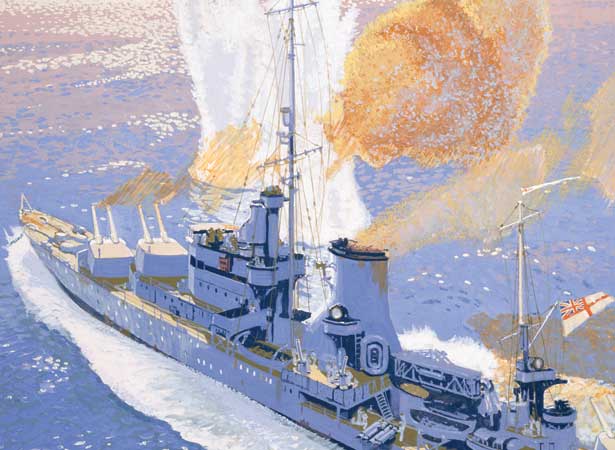
When the cruiser HMS Achilles opened fire on the German pocket battleship Admiral Graf Spee in the South Atlantic, it became the first New Zealand unit to strike a blow at the enemy in the Second World War. With the New Zealand ensign flying proudly from its mainmast, Achilles also became the first New Zealand warship to take part in a naval battle.
The 82-minute engagement between the Graf Spee and its three smaller British opponents – Achilles, Ajax and Exeter – was inconclusive. All four vessels were damaged, with the British ships suffering 72 fatalities (including two New Zealanders) to the Graf Spee’s 36. But the German warship’s subsequent withdrawal to the neutral Uruguayan port of Montevideo, and its dramatic scuttling by its own crew on 17 December, turned the Battle of the River Plate into a major British victory – and a welcome morale boost for the Allied cause.
Achilles’ role in the battle was a special source of pride for New Zealanders, who welcomed the crew home in early 1940 at huge parades in Auckland and Wellington (see 23 February).
Read more on NZHistory
Battle of the River Plate – Battle of the River PlateThe battle – Battle of the River PlateSecond World War – The Royal New Zealand Navy
External links
How to cite this page
'Battle of the River Plate', URL: https://nzhistory.govt.nz/page/battle-river-plate-0, (Ministry for Culture and Heritage), updated 23-Sep-2020

Community contributions